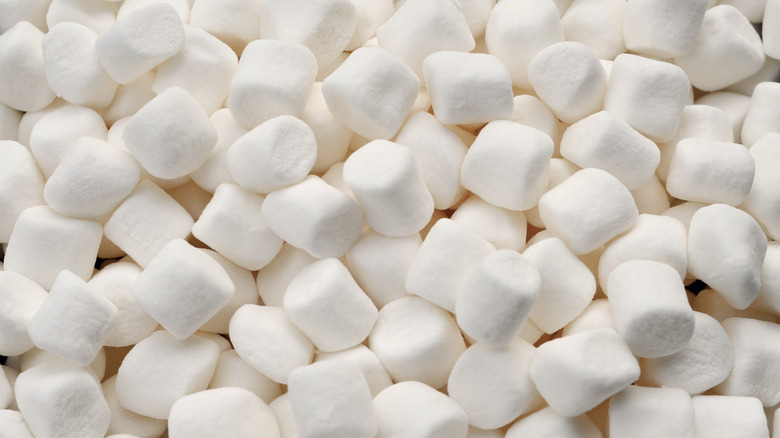The Genius Marshmallow Trick To Prevent Leaky Ice Cream Cones
Is there anything better than a cold, delicious ice cream cone on a hot day? The problem is you can never eat the sweet treat fast enough before it starts dripping all over you. Especially frustrating is when the bottom of the ice cream cone starts leaking due to a tiny hole. Even if you wrap napkins around it, the melting treat leaks right through those, too, creating a sticky mess. But, if you try a genius marshmallow trick, it may keep you from having to deal with a leaky treat ever again.
The hack is simple: Just wedge a mini-marshmallow into the bottom of the sugar cone — or a larger marshmallow into a waffle cone — to plug any potential ooze. If you prefer a regular flat-bottomed cone, that will need a nice fat marshmallow to cover its surface area. Then, scoop your ice cream like a pro into the cone and enjoy your favorite flavor, leak-free.
An added benefit to this marshmallow trick is that you will have a yummy treat to enjoy at the end, once you lick and chomp your way to the bottom of the cone. This sugary puff of goodness absorbs liquid quickly, so it's bound to take on the flavor of your preferred scoop in the end. Given that, you could add a flavored marshmallow to really thrill your palate, or make the cone a seasonal delight by incorporating special-edition marshmallows such as pumpkin spice in the fall.
The science behind the marshmallow trick
Ice cream melts as a result of the sensitive freezing process. When the treat is frozen, ice crystals form around it. At the same time, liquid is channeling through air cells and fat globules. But, once the dessert is removed from the freezer, the ice crystals melt and channel through the gaps between fat cells. As the composition breaks down, it's what leads to the food melting.
On a day when the thermometer is soaring, the melting process is accelerated even further, and the marshmallow trick becomes more useful than ever. What is it about marshmallows that allows them to be repurposed as ice cream leak prevention aids? Consider that marshmallows are actually made of sugar, corn syrup, gelatin, and air. As Richard Hartel, a food engineer at the University of Wisconsin–Madison explained to the American Chemical Society, a marshmallow is more or less just a foam that is stabilized by gelatin. Foam is used to plug leaks in houses all the time, and it works in the same way in this edible hack.
If you want to further slow the ice melt happening in your hand, you could also try wrapping aluminum foil around the cone; the material reflects light and heat, which will slow the drip.


